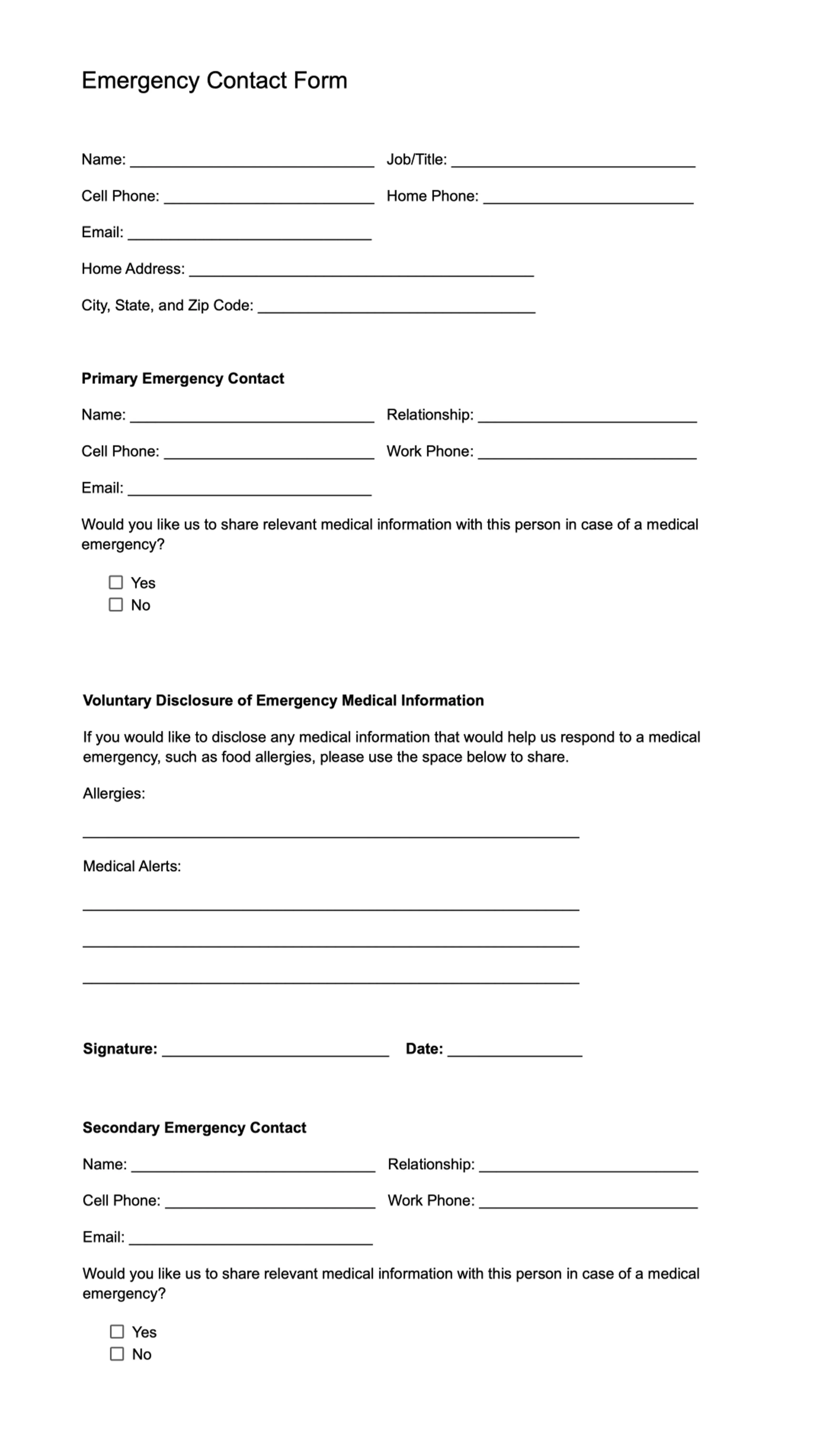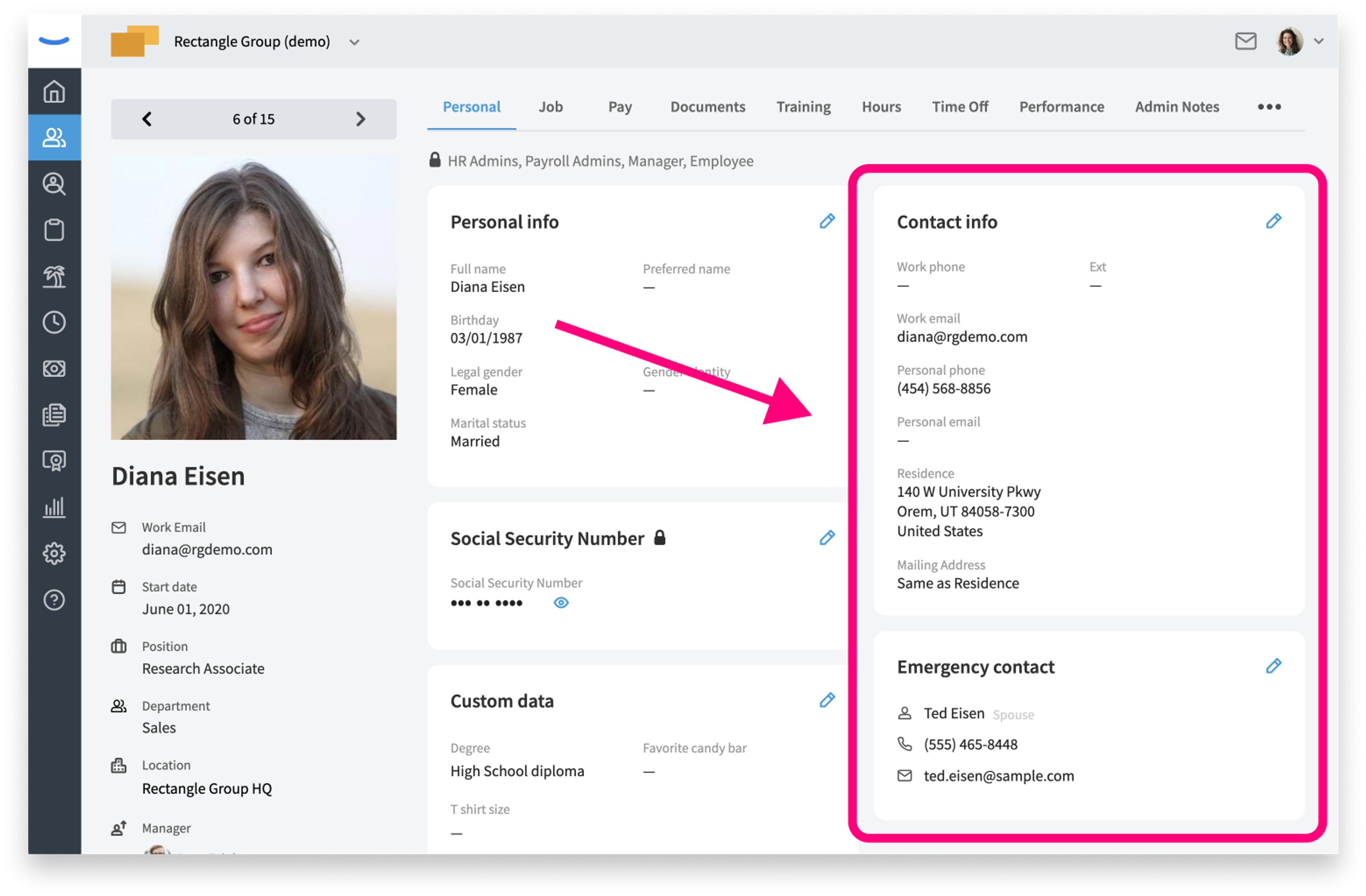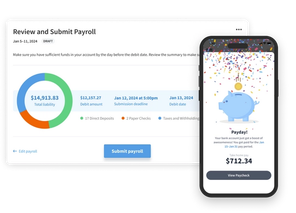
Eddy’s HR Mavericks Encyclopedia
The world's largest free encyclopedia of HR, with 700+ HR articles and podcasts.
Created by Eddy and our HR Mavericks community.
Employee Emergency Contact Form
What do you do if your employee gets sick at work and they can’t drive themselves home? Or what if they haven’t shown up in multiple days? When things like this happen at work, you’ll want to know who to call. A great way to make sure you have this information is by creating an employee emergency contact form. In this article, we’ll teach you how to make one.
What Is an Employee Emergency Contact Form?
An employee emergency contact form is an onboarding document that employees can fill out to provide you with their emergency contact information. They can also provide any other information that they think you might need to know in case of an emergency, such as food allergies or allergies to any medications.
To keep this form and all of your other onboarding forms organized, consider using an HR software like Eddy. With Eddy, you can upload documents and send them to your new hires where they can fill out and sign them digitally.
Free Sample Emergency Contact Form Template
We've prepared a sample emergencey contact form template that you can download.

Why Having Employees Fill Out an Emergency Contact Form Is So Important
Below are a few ways the emergency contact employee forms help ensure your employees’ safety and wellbeing.
- To help the employee obtain medical assistance. If your employee is injured at work, you may need to contact their emergency contact to help them get the medical care they need. Or, if they’re sick but don’t want to go to the hospital, they may need a ride home.
- To be able to respond to a medical emergency. If an employee is experiencing a medical emergency at work, you should call 911. In the interim, the employee may have provided important information that can help you or the emergency medical personnel respond.
- To inform emergency contacts if you can’t locate your employee. Unfortunately, you may run into a situation where you can’t find your employee. If they’re not showing up to work and you can’t locate or contact them, you’ll want to let their emergency contact know.

Experience paperless onboarding with Eddy
Learn how Eddy can help you save time on tedious administrative tasks.
Experience paperless onboarding with Eddy
Learn how Eddy can help you save time on tedious administrative tasks.

What to Ask for on an Emergency Contact Form
Ask for the following information on your emergency contact form:
1. The Employee’s Information
If your company keeps paper files, make sure to add the employee’s name, job title, or department. Although the form should always be in the personnel file, documents do sometimes get misplaced. You’ll want to be able to confirm who the form belongs to.
2. Primary Emergency Contact
Having more than one emergency contact is helpful in case your first contact doesn’t answer their phone. Be sure to ask for the emergency contact’s cell phone number, their work phone number and their email. Also, ask whether you can share medical information with the emergency contact, and what their relationship is to your employee.
3. Secondary Emergency Contact
Just like the primary emergency contact, ask for the secondary contact’s relationship to your employee, their cell phone number, their work phone number and their email. The secondary emergency contact should only be called if the primary emergency contact can’t be reached. Again, also ask whether you can share medical information with the emergency contact.
4. Home Information
You may need the employee’s home information if you’re trying to help locate the employee, or if you want to contact employees to tell them not to come in due to bad weather.
5. Voluntary Additional Information
Although it can be helpful to have certain medical information, it’s very important that you make it clear with your employees that sharing any medical information is completely voluntary. You may want to add a sentence to the form explaining that the purpose of sharing information would be to help you respond to an emergency. You can also give examples, such as allergies to certain medications.
When to Reach Out to an Employee’s Emergency Contact
The following are some examples of situations when you may need to reach out to your employee’s emergency contact:
- When your employee gets sick and you have to call 911.
- When your employee is sent to the hospital.
- If a friend, roommate, or someone other than their emergency contacts calls to inform you that the employee has been hospitalized.
- When your employee has been injured at work and needs assistance returning home.
- When your employee has not shown up to work for multiple days or shifts and you’ve been unable to contact them.
- If the employee has passed away and you need to make the last payment or you’d like to know who to send their belongings to.
In some of the above situations, you’ll be able to ask the employee if they’d like you to call their emergency contact. If this is a possibility, always communicate with the employee first to make sure you contact the right person.
Organize Your People info with Eddy
Eddy's HR+Payroll software has you covered when it comes to emergency contact information. Each employee fills out contact and emergency contact information when they first sign in. That way you'll never face the unfortunate scenario where you need to get in touch with an employee's emergency contact, but don't have the contact info!
You can easily avoid this scenario by using an HR software like Eddy to organize and save all of your important data and documents for each hire. With essential data stored digitally, the info you need will always be at your fingertips.


Experience paperless onboarding with Eddy
Learn how Eddy can help you save time on tedious administrative tasks.
Experience paperless onboarding with Eddy
Learn how Eddy can help you save time on tedious administrative tasks.

Topics

Natasha Wiebusch
Natasha is a writer and former labor and employment attorney turned HR professional. Her experience as a litigator and HR trainer inspired her to begin writing about anti-discrimination laws in the workplace. As a writer at Eddy HR, she hopes to provide helpful information to both employees and HR professionals who need help navigating the vast world of human resources. When she's not writing, you might find her cheering on the Green Bay Packers or hiking in the Northwoods of Wisconsin.
Frequently asked questions
Other Related Terms
Eddy’s HR Mavericks Encyclopedia
Employee Emergency Contact Form
What do you do if your employee gets sick at work and they can’t drive themselves home? Or what if they haven’t shown up in multiple days? When things like this happen at work, you’ll want to know who to call. A great way to make sure you have this information is by creating an employee emergency contact form. In this article, we’ll teach you how to make one.
What Is an Employee Emergency Contact Form?
An employee emergency contact form is an onboarding document that employees can fill out to provide you with their emergency contact information. They can also provide any other information that they think you might need to know in case of an emergency, such as food allergies or allergies to any medications.
To keep this form and all of your other onboarding forms organized, consider using an HR software like Eddy. With Eddy, you can upload documents and send them to your new hires where they can fill out and sign them digitally.
Free Sample Emergency Contact Form Template
We've prepared a sample emergencey contact form template that you can download.

Why Having Employees Fill Out an Emergency Contact Form Is So Important
Below are a few ways the emergency contact employee forms help ensure your employees’ safety and wellbeing.
- To help the employee obtain medical assistance. If your employee is injured at work, you may need to contact their emergency contact to help them get the medical care they need. Or, if they’re sick but don’t want to go to the hospital, they may need a ride home.
- To be able to respond to a medical emergency. If an employee is experiencing a medical emergency at work, you should call 911. In the interim, the employee may have provided important information that can help you or the emergency medical personnel respond.
- To inform emergency contacts if you can’t locate your employee. Unfortunately, you may run into a situation where you can’t find your employee. If they’re not showing up to work and you can’t locate or contact them, you’ll want to let their emergency contact know.

Experience paperless onboarding with Eddy
Learn how Eddy can help you save time on tedious administrative tasks.
Experience paperless onboarding with Eddy
Learn how Eddy can help you save time on tedious administrative tasks.

What to Ask for on an Emergency Contact Form
Ask for the following information on your emergency contact form:
1. The Employee’s Information
If your company keeps paper files, make sure to add the employee’s name, job title, or department. Although the form should always be in the personnel file, documents do sometimes get misplaced. You’ll want to be able to confirm who the form belongs to.
2. Primary Emergency Contact
Having more than one emergency contact is helpful in case your first contact doesn’t answer their phone. Be sure to ask for the emergency contact’s cell phone number, their work phone number and their email. Also, ask whether you can share medical information with the emergency contact, and what their relationship is to your employee.
3. Secondary Emergency Contact
Just like the primary emergency contact, ask for the secondary contact’s relationship to your employee, their cell phone number, their work phone number and their email. The secondary emergency contact should only be called if the primary emergency contact can’t be reached. Again, also ask whether you can share medical information with the emergency contact.
4. Home Information
You may need the employee’s home information if you’re trying to help locate the employee, or if you want to contact employees to tell them not to come in due to bad weather.
5. Voluntary Additional Information
Although it can be helpful to have certain medical information, it’s very important that you make it clear with your employees that sharing any medical information is completely voluntary. You may want to add a sentence to the form explaining that the purpose of sharing information would be to help you respond to an emergency. You can also give examples, such as allergies to certain medications.
When to Reach Out to an Employee’s Emergency Contact
The following are some examples of situations when you may need to reach out to your employee’s emergency contact:
- When your employee gets sick and you have to call 911.
- When your employee is sent to the hospital.
- If a friend, roommate, or someone other than their emergency contacts calls to inform you that the employee has been hospitalized.
- When your employee has been injured at work and needs assistance returning home.
- When your employee has not shown up to work for multiple days or shifts and you’ve been unable to contact them.
- If the employee has passed away and you need to make the last payment or you’d like to know who to send their belongings to.
In some of the above situations, you’ll be able to ask the employee if they’d like you to call their emergency contact. If this is a possibility, always communicate with the employee first to make sure you contact the right person.
Organize Your People info with Eddy
Eddy's HR+Payroll software has you covered when it comes to emergency contact information. Each employee fills out contact and emergency contact information when they first sign in. That way you'll never face the unfortunate scenario where you need to get in touch with an employee's emergency contact, but don't have the contact info!
You can easily avoid this scenario by using an HR software like Eddy to organize and save all of your important data and documents for each hire. With essential data stored digitally, the info you need will always be at your fingertips.


Experience paperless onboarding with Eddy
Learn how Eddy can help you save time on tedious administrative tasks.
Experience paperless onboarding with Eddy
Learn how Eddy can help you save time on tedious administrative tasks.

Topics

Natasha Wiebusch
Natasha is a writer and former labor and employment attorney turned HR professional. Her experience as a litigator and HR trainer inspired her to begin writing about anti-discrimination laws in the workplace. As a writer at Eddy HR, she hopes to provide helpful information to both employees and HR professionals who need help navigating the vast world of human resources. When she's not writing, you might find her cheering on the Green Bay Packers or hiking in the Northwoods of Wisconsin.
Frequently asked questions
Other Related Terms
Eddy's HR Newsletter
Sign up for our email newsletter for helpful HR advice and ideas.


